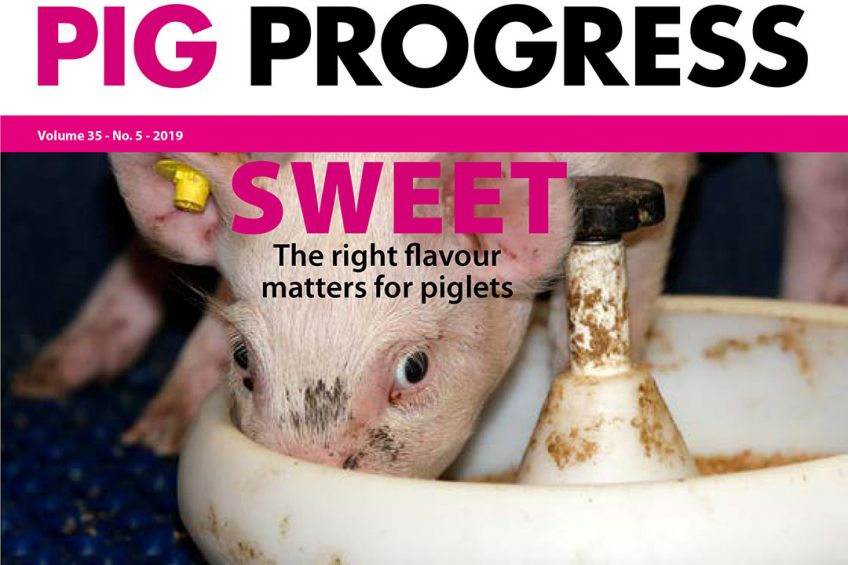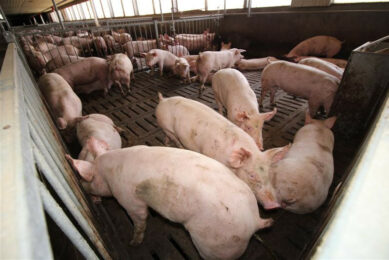Sweet feed, social pigs and a spray in Pig Progress 5

The 5th digital edition of Pig Progress in 2019 is now available. Key themes include biosecurity and breeding, which takes readers on a journey from the USA to the Czech Republic.
In times of African Swine Fever, the importance of biosecurity can simply not be underestimated. Especially in countries where the virus is around, double vigilance is advisable. In the Czech Republic, they were especially aware of that when ASF was detected near Zlín in 2017.
Access the digital magazine here
With good cooperation and a targeted approach the virus ‘only’ killed 221 wild boar before the message could be shared to the rest of the world that the virus was under control. In recent years, that has been a unique achievement. Now how did the Czechs do it? They describe it in detail on pages 26-29.
More prevention focus at Zoetis
Increasingly, pharmaceutical company Zoetis is also focusing on themes like ‘prevention’. Acquisitions in recent years have made clear that concepts like diagnostics and prediction have become more important. Reporter Carolien Kloosterman of Pig Progress’ sister title Boerderij spoke to Rob Kelly, the company’s president international operations. The interview can be found on page 17.
Breeding social pigs
Paying attention to pig sociability opens entirely new doors in the world of pig breeding. If the animals’ ability to positively or negatively influence penmates is hereditable, then it is possible to breed on this trait. Helle Palmø of Danbred explains how the concept of ‘social pigs’ works on pages 24-25.
Pheromone influencing infertility issues
In terms of breeding, that is not all in this edition. The breeding process can sometimes be tough due to seasonal infertility, influenced by climate conditions. Research at Texas Tech University showed that a pheromone spray can positively influence that. Author Prof John J. McGlone explains the principle of ‘Boar Better’ on pages 6-7.
On-farm at a sow farm in Missouri
Pig Progress went on-farm this month in cooperation with pig genetics company Choice. The genetics company teamed up with Schwartz Farms in Missouri, to breed pigs that can be used for performance testing in its R&D programme. Editor Vincent ter Beek shares his impressions on pages 20-23.

Sow performance and carbohydrases
In the context of breeding, it is also interesting to turn to the theme of sow performance. Pierre Cozannet, Aurélie Preynat and Marcio Ceccantini of Adisseo have a couple of interesting thoughts to share with regard to carbohydrases, which they call underutilised nutritional solutions. Read more on pages 12-13.
What is the importance of sweet feed for piglets?
This month’s cover story takes a deep dive into flavours, particularly ‘sweet’ for piglets. It is well-known that piglets like sweet feed, but how does that exactly work and what effects does sweet feed have on the animals? Pancosma’s Mathilde Ramillien and Joëlle Faugeron explain this all using 6 key questions. Pages 9-11
Reducing antibiotics in pig production
And how to reduce antimicrobials in pig production is a question that is being asked very frequently. At Trouw Nutrition they received this question as well and the company decided to share some of the best practices of its customers. 3 Lessons can be found on pages 14-16, written by Maartje Wilhelm, Nienke de Groot and Javier Roques Mata.

Lawsonia influencing lung health as well
Lawsonia intracellularis is known to be a harmful bug to pigs and influences the impact of other pathogens as well. That includes respiratory problems too, explains Dr Fernando L. Leite of Boehringer Ingelheim on pages 30-31.
Columns on straw and pig aggression
This month’s columns address the issue of using straw for finisher pigs. Pig Progress’ regular columnist John Gadd has a few positive thoughts to share about this concept in his column on page 8. Dr Monique Pairis-Garcia delves deeper into the topic of pig aggression… Are the animals really aggressive or is their behaviour sometimes badly understood? Page 34
Animal rights activists – they will be back
Last but not least – the Bigger Picture on pages 18-19. It just serves as a warning to what animal rights activists are capable of. Their influence, however unwanted by the entire pig industry, is not going to become less in years to come.











